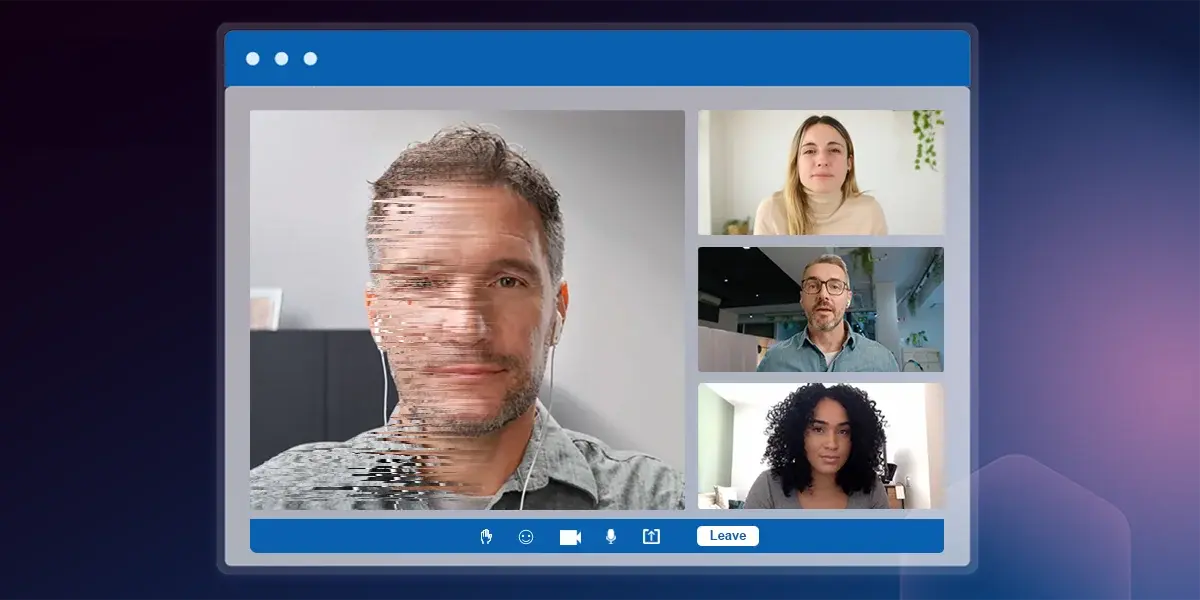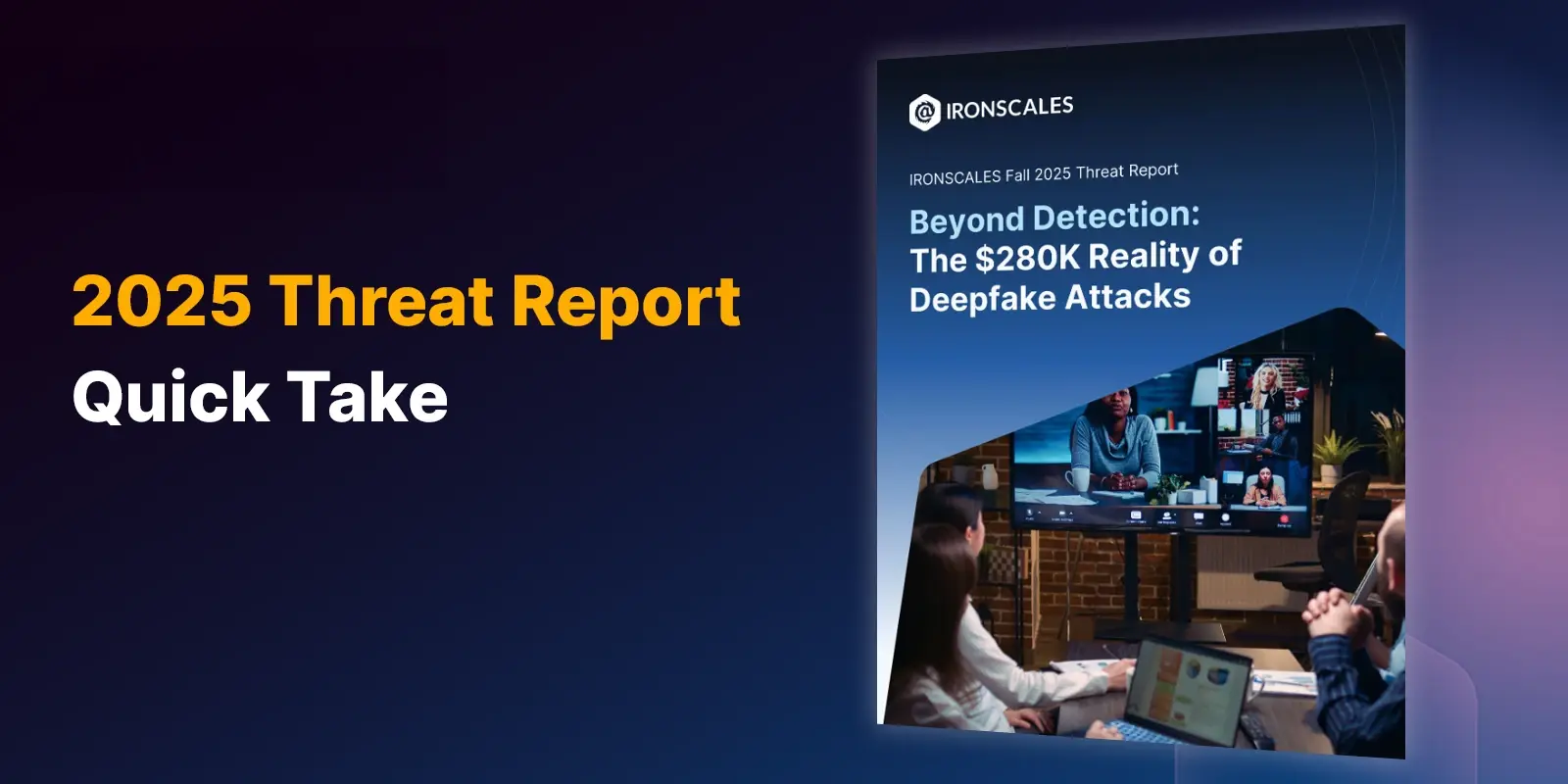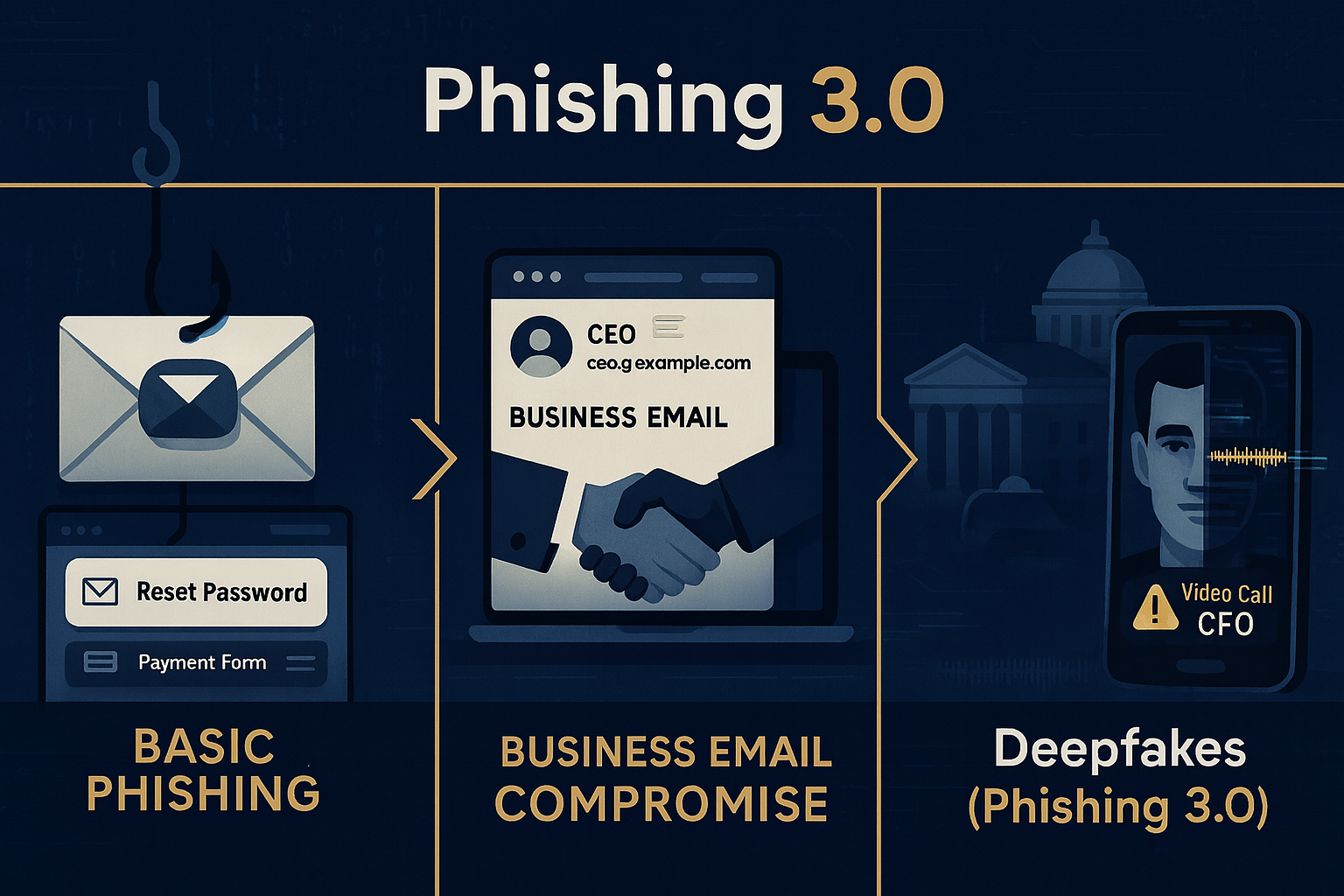Table of Contents
/Leadership%20Headshots/eyal%20headshot%20transparent%20background.webp?width=137&height=109&name=eyal%20headshot%20transparent%20background.webp)
At IRONSCALES, we believe trust is the bedrock of every business conversation. Whether it's a deal being negotiated, a partner being onboarded, or a CEO addressing their workforce, trust underpins it all. Yet, as we step into the era of Phishing 3.0, that trust is under siege.
Let me explain. Phishing 3.0 isn't just another iteration of a familiar threat. It’s a fundamental shift in the way cybercriminals operate. Where once they sent suspicious links or forged emails, today they clone voices, fabricate video calls, and impersonate the very people we trust most. We’ve entered an age where seeing is no longer believing.
The attack surface has evolved. Identity itself is now the vector.
From Links to Lies, The Evolution of Phishing
For decades, email has remained the primary communication channel for business. And with it, the primary attack vector. Phishing 1.0 was crude but effective—bulk emails asking you to "click here." Phishing 2.0 grew more sophisticated, targeting individuals BEC and BEC campaigns.
Organizations responded with Secure Email Gateways (SEGs), building perimeter defenses to stop these threats. But the attackers and their methods evolved faster than the defenses. For instance, in our recent analysis, captured in the "Hidden Gaps in SEG Protection" whitepaper, we saw that that SEGs still allow an average of 67.5 phishing emails per 100 mailboxes every month to slip through. These aren't theoretical risks; they're real attacks reaching real people.
And that was before deepfakes entered the equation.
When Identity Becomes the Threat
The rise of generative AI has unlocked something profoundly dangerous, synthetic identities that are nearly indistinguishable from the real thing. Deepfakes blur the line between reality and fabrication.
Our latest research shows that 94% of cybersecurity professionals are concerned about deepfakes infiltrating their organizations, with 43% ranking deepfake defense as a top priority for the year ahead. These aren't distant hypotheticals; they’re happening now.
Phishing 3.0 weaponizes identity itself. It’s no longer just your systems under attack, it’s you.
Your voice.
Your face.
Your behavior.
This is the new battleground.
Why Traditional Defenses Fall Short
Legacy systems weren’t designed to detect synthetic personas. They look for known threats like malicious links, suspicious attachments, or obvious text signals. They are predominantly one-dimensional, concentrating solely on email and text, a single mode of communication.
Phishing 3.0 brings something different. Video calls that mirror real faces, voices that echo trusted colleagues, emails crafted to exploit personal details - this is phishing evolved through deepfakes and generative AI.
If Phishing 1.0 could be caught by filters, and Phishing 2.0 challenged by behavioral AI, NLP, and user training, Phishing 3.0 requires a whole new mindset. We can’t rely on the same playbook that failed to close the gaps in earlier generations of phishing. And we certainly can’t expect to outpace generative AI with static defenses.
Our Vision: Rebuilding Trust in Digital Communications
When I started IRONSCALES over a decade ago, it wasn’t just to stop phishing. I wanted to defend something deeper: trust. I believed then, as I do now, that communication should feel safe. That it should connect people, not expose them. But as attackers evolved, so did the threats, and today, deception has a new face. Deepfakes are redefining what it means to believe what you see, hear, and read. That’s why we’ve evolved too.
With our introduction of our deepfake protection capabilities, we are taking the next bold step in securing the most fundamental element of communication: trust. This is not just about technology. It’s about ensuring that every voice heard and every face seen is real, so organizations can focus on what matters: communicating confidently, collaborating freely, and conducting business safely.
We're not stopping phishing attacks. We’re stopping deception itself.
Come See the Future of Defense
At RSA next week, we’re not just launching a product, we’re defining a new standard for defending trust against deepfakes. Because identity itself is the new attack vector.
If you're attending, I invite you to stop by our booth and see firsthand how we’re restoring trust in business communications. If you can't make it, visit our Deepfake Phishing site to join the movement.
Because in the age of Phishing 3.0, trust is everything. And we’re here to protect it.
Explore More Articles
Say goodbye to Phishing, BEC, and QR code attacks. Our Adaptive AI automatically learns and evolves to keep your employees safe from email attacks.

/Concentrix%20Case%20Study.webp?width=568&height=326&name=Concentrix%20Case%20Study.webp)













.webp?width=100&height=100&name=PXL_20220517_081122781%20(1).webp)

